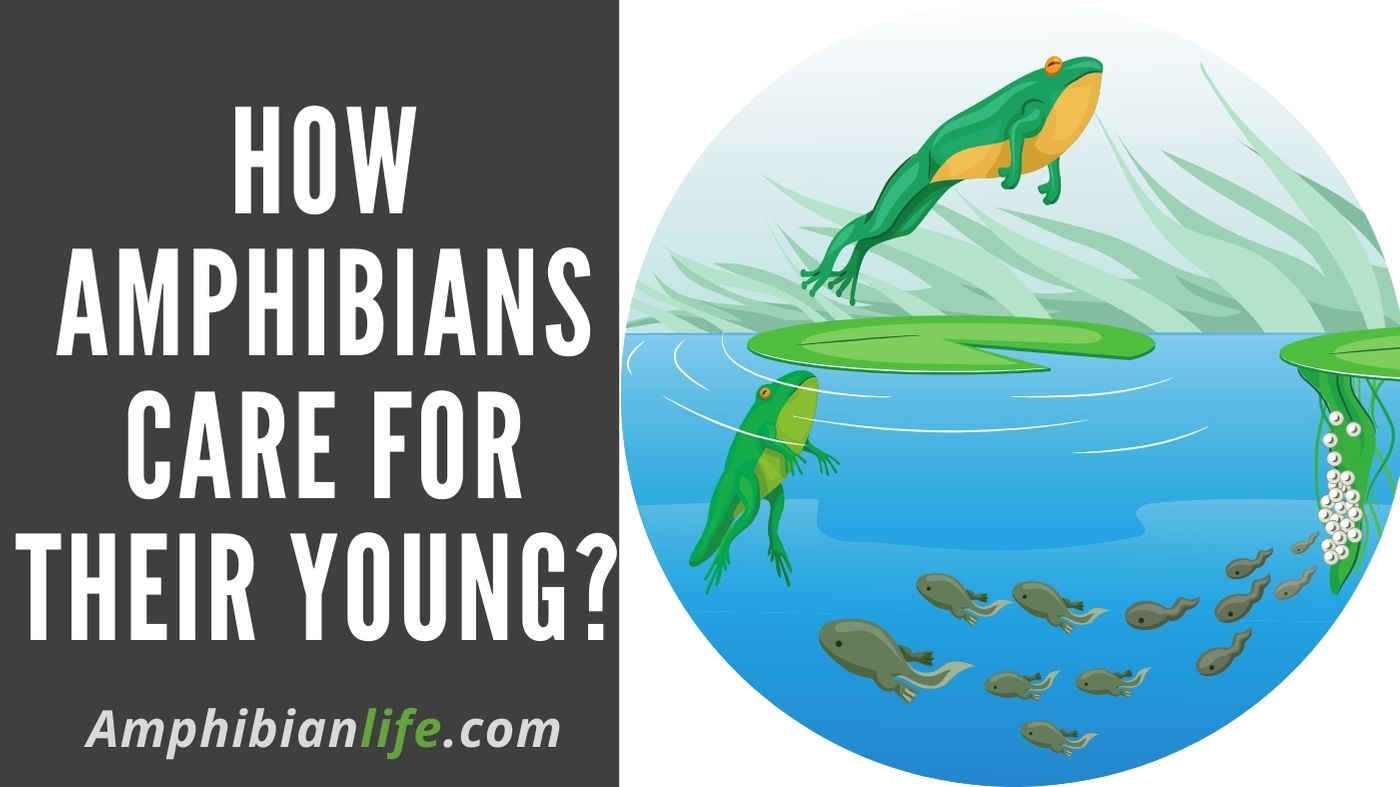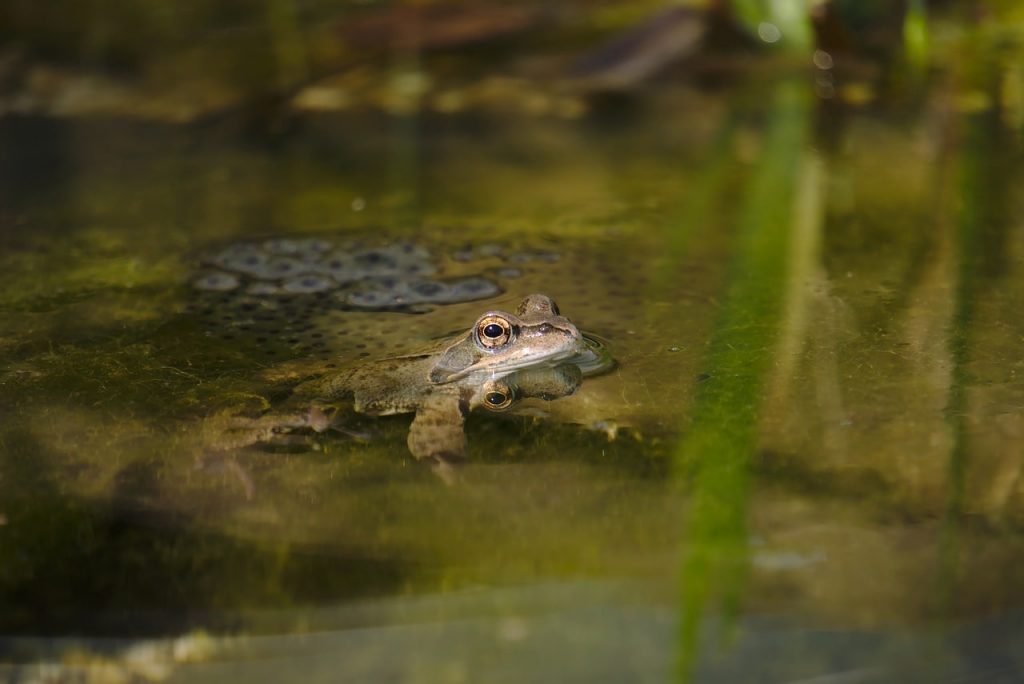
When it comes to taking care of younglings, all animals do it slightly differently. I didn’t know how amphibians did this and if there were any differences between the species. So I went online and to find more information about how amphibians take care of their young. Here’s all the information I could find.
So, How do amphibians take care of their young? This depends on the amphibian species. Some species let go of their younglings altogether and some will stand by their young-lings side to know that their young are safe.
Although they actually take care of amphibian younglings, it is fun to know how frogs, toads, newts, and salamanders do this. I hope you find the answers you need below in this post! It took a lot of time to put this together, and I hope you’ll enjoy it!
Do amphibians take care of their young?
Unfortunately, most amphibians will not take care of their young only 10% of male frog species take care of their babies.
If we look at salamanders, the females put energy and nutrients in their eggs so that the embryos can feed themselves. This is the same with frogs.
Most frogs will not take care of their young. However, some types of frogs are more caring and carry their young around in a little pouch on their back! Let us dive a little deeper into the matter and see what frogs, toads, salamanders, and newts do with their younglings.

How Do Frogs Care For Their Younglings
Most of the time the eggs of frogs are left behind and the tadpoles have to see for themselves how they survive. But, as I said earlier, some species of frogs do take care of their younglings.
Surprisingly enough, how much care they give can be dependent on the size of water that the eggs are laid in. The larger the body of water is, the less care the frogs give to their young.
Some frogs will stick around the area where the eggs lay to keep them safe from predators and the environment. The African bullfrog is a good example of this. The male African bullfrogs protect their offspring from birds and other predators that are trying to eat them. But that is not the only thing.
Male African bullfrogs also protect their young from dying by making paths from one pond to another. Below is a nice video of this so you can see it in action.
Do Salamanders Care For Their Young?
The information I found is only for the spotted salamander. I found that the spotted male salamanders do not stick around to care for their young. They do some other things to be sure that their young are safe, can grow and do not starve. To battle the starvation, the female spotted salamander puts energy and nutrients into the eggs.
This way the embryos can feed themselves off of that before they hatch. To be sure that the eggs are safe, they cover the eggs with jelly so that they won’t dry out from the sun and have some protection. In the last place, they are really careful about the place the eggs are laid. After all this they leave the pond an don’t provide any care for their young ones.
What About Other Salamander Species?
Now, after some digging, I found out that there are terrestrial Oviparous salamanders that do it a little differently than the spotted salamanders I talked about above. Some terrestrial salamander species lay their eggs in protected nests after they are fertilized. And then stay with them.
Take the bolitoglossa pesrubra for example. They make nests in dark and moist places. This can be under a rock or in a rotting log. Then, when the eggs are laid, the mother and sometimes also the father care for the eggs for four or even five months until they hatch. They do this by wrapping their body around the eggs and their head resting on top of the eggs. They do this to be safe and for the eggs to stay warm.
Fun fact: All species in the genus bolitoglossa (also called the web-footed salamanders) skip the aquatic larval stage.
You may also like to read What Do Frog Eggs Look like (Where They Keep Them)?
What about the Viviparous Salamanders?
That is a whole other story! Viviparity is rare among salamanders. It means that the fertilized eggs hatch within the body of the mother and then she gives birth to live young! The female gives birth to these young in a protected area to keep the new tiny salamanders safe.
Do Salamanders Eat Their Eggs Sometimes?
Now, this is interesting. While some salamander species will take care of their young, they are also known to practice cannibalism (this means that they eat their species). So, when you house salamanders and you want to hatch the eggs yourself. Care for the eggs by taking them apart from the adult salamanders.
Now, this is not only true for salamanders. There are toads that also practice cannibalism. In my article What do toads eat, I explain this further, but there are some species (like the Cane toad and the American toad for example) that would eat juveniles.
That is why you also have to be careful when hatching your own toad eggs. Read on to find out how to hatch salamander eggs yourself. Much of the steps are also applicable when trying to hatch your own toad eggs.
How To Hatch Salamander Eggs Yourself
When you have pet salamanders, and you want to hatch the eggs that they have laid, you can do so. Although I have to say that it can be quite challenging to do so.
How do you hatch a salamander egg? 5 Easy Steps to follow:
1) Separate the eggs from the adult male and female salamander. You must do this because (as I said earlier) otherwise they’ll eat the eggs of their own because salamanders practice cannibalism.
2) Reduce the amount of aeration and water flow. This can mean that you need to turn off the filter and the aeration system. You can also move the eggs away a bit from the air source. If you decide to keep the eggs in a different container, you don’t have to worry about this.
3) Clean the container (I assume that you hold the eggs in a different container). Change the water in the tank daily and move the eggs to a new and clean container two times a week.
4) Take the eggs that do not hatch out of the container. The eggs that don’t hatch might start to go bad and getting moldy. You remove these because they can infect the other eggs.
5) Wait for the eggs to hatch! This can take up to three weeks. This depends largely on the species of salamanders that you hold.
How Do Toads and Newts Take Care Of Their Young?
Now that I’ve told you how frogs and salamanders take care of their young, I assume that you want to know how toads and newts do this. Now I don’t think this comes as a surprise, but they do the exact same thing. Some newts and toads will care for their eggs and later their juveniles and some won’t do that at all.
Related Questions
Where do salamanders live?
Salamanders live in a variety of places around the world. If you want to find them, it is best that you dive deeper into the world of the specific salamander. What I mean by that is that you do some research about the salamander and go to the places where it is most likely that you will find them. You can read this article I wrote about where they live.
Why do amphibians lay eggs in water?
As I explained a bit in this article, amphibians lay eggs in the water so that the eggs won’t dry up from the sun exposure. That is also why they have a jelly-like defense mechanism around them. They also lay them in water because the tadpoles can later feed themselves on the leaves that are in the pond.
What is the largest amphibian?
The largest amphibian of the world is the Chinese giant salamander. It can grow as large as us humans and can weigh up to 50 kg! The Chinese call this salamander “baby fish” and this is because of his whining cry.
But fun to know is the facts that they also go by the name “pig not eat” this happened after farmers saw it being ignored by hungry pigs even though it would make for easy prey
